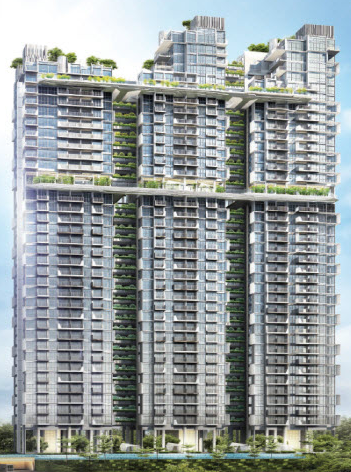I enjoyed the following email because it seems to be from a guy who is the head of a typical HDB flat household in Singapore. Married with 2 young children, he is trying his best to make sure he is financially secure in his golden years.
From what he has shared in his email and with certain assumptions I am willing to make, I feel that he will be quite comfortable in his retirement. I am sharing our correspondence here:
----------------------------------------------------------------------
Hello AK
 |
| When our home is fully paid, we have control AND ownership. Before it is fully paid, we have control but NOT ownership. We cannot say we own our apartment until it is fully paid for. |
My reply to C:
Hi C,
Welcome to my blog and I am glad you have found it useful. :)
Next, congratulations on being debt free! It is a good feeling, isn't it? I don't think your friends staying in an EC and driving a luxury car are debt free. They could be, of course, but if they belong to the same cohort and have similar level of earned income as you, the probability is lower.
If your friends are still servicing a mortgage and car loan, you are being very nice not to laugh at them for being still in debt. OK, AK is being naughty here. Bad AK! Bad AK! ;p
Now, let me say that having $161,000 in your CPF-SA by end of 2015 is an accomplishment at age 40. By age 50, you would have $241,500 and by age 60, if you were to leave your funds in the CPF-SA and, of course, the mandatory CPF-RA, you would have $362,250. This is assuming that there is no more mandatory contribution from 2016 and this is also not taking into consideration the extra 1% paid on the first $40,000 in the CPF-SA. $500,000? I think you have nailed it with this strategy.
Oops, I forgot about your savings in the CPF-OA which will build up from age 40 to 55 (or 62 if you choose to retire later). ;)
As for investing in the STI, you want to read the guest blogs by Matthew Seah. Just go to my blog's left side bar and look for his name under the section that says "Guest Bloggers". Matthew wrote about options provided by POSB and OCBC.
For people who do not have the inclination nor the time to actively monitor their investments in the stock market, index investing is a pretty good choice. However, do take note that the stock market goes through bullish and bearish phases too. So, it is important that you are able to sit out bearish phases and not break into a sweat.
The trick is only to invest with money you can afford to lose and not to use money earmarked as emergency funds or for any other purposes. You do not want to have to liquidate at the depths of a bear market.
Investing will always have an element of risk. Look at the Japanese and the Americans and how their countries' economies went into a tailspin in the past. Investors saw years of gains wiped out. This is why I think that the CPF is an important cornerstone of retirement funding adequacy. It is not only risk free, it is free of volatility.
Continue with a financially prudent lifestyle. Make more money. Spend less. Keep a big enough emergency fund (and I think this should grow in size as we grow older). Invest the rest but always keep a war chest ready to buy more during bear markets. Quite simple. :)
Best wishes,
AK
----------------------------------------------
We should never laugh at people just because they are staying in homes less "prestigious" or if their mode of transportation is not as flashy.
There are many HNW individuals in Singapore who stay in HDB flats and take the public transport.
Don't judge a book by its cover. Better still, don't judge. Just a reminder to myself, of course.
Related posts:
1. In my 40s, married with kids? What to do?
2. An essential habit to becoming richer.













































